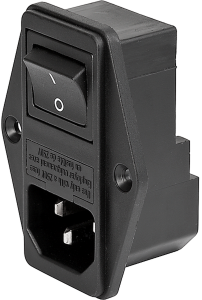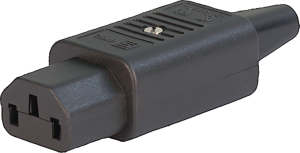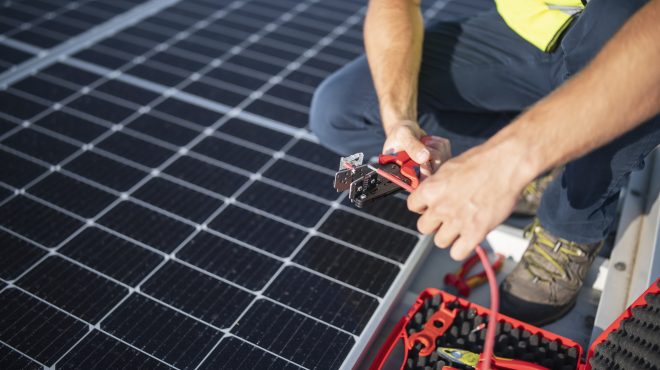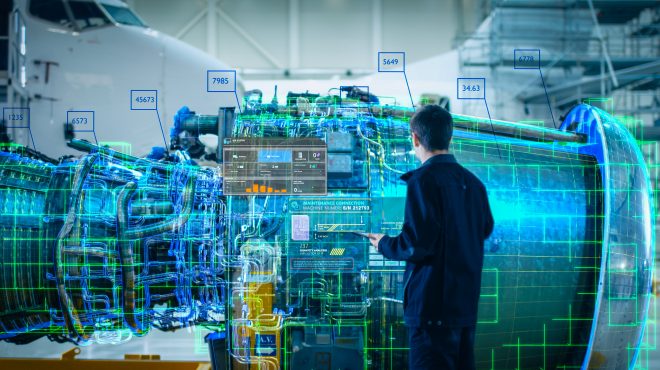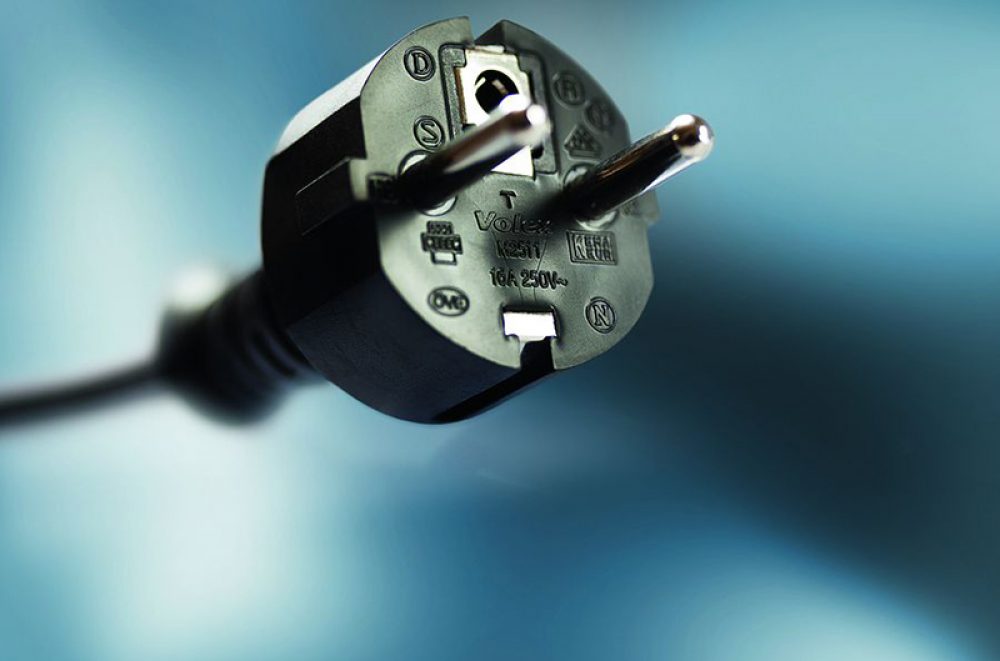
Connection Technology according to IEC 60320
The IEC 60320 standard offers a wide range of connectors that meet the requirements of different applications. In our article you will learn everything you need to know about this standard and what advantages it offers you.
Table of contents
- For the use of pluggable power supply lines
- Where are connection technology products used?
- What are the advantages of pluggable power supply systems?
- Connectivity components at a glance
- What are the standards for plugs and sockets?
- Device plugs and sockets according to IEC 60320
- Components according to IEC 60320 at Bürklin Elektronik
For the use of pluggable power supply lines
According to the standard 0623 of the German Association of Electrical Engineering, Electronics, and Information Technology (VDE), appliance couplers are connectors with contact pins for mains voltage in low-voltage networks. They are installed directly into terminal equipment and are internationally standardized according to the International Electrotechnical Commission (IEC).
Where are connection technology products used?
Whether in the office, in the kitchen, in data centres or in medicine: Connectivity products can be found in a wide variety of areas – worldwide. It is therefore necessary to adapt the power supply of each device to country-specific conditions. Logical, considering that Germany, Great Britain, and the United States, for example, have different power plugs.
With regard to the device life cycle, there are very different requirements – from assembly and testing to logistics and maintenance. They can be met much more easily with pluggable power supply systems than with permanently connected connection technology. Costs and effort in the individual phases can be minimized. No wonder, then, that the trend towards flexible plug connections is continuing.
What are the advantages of pluggable power supply systems?
The pluggable power supply is always configured in the same way. This keeps inventory costs low as only a few device versions are needed. Country-specific adaptations are made at the end of the production process or even only in the sales department, in the form of specific containers, power supply cables and operating instructions.
Speaking of country specifications: any rationalization and automation can be carried out independently of the country in question by means of system tests. In addition, standardized plugs and sockets allow for a smooth and cross-national transfer, operation, and exchange of the connection technology.
A further advantage of appliance plugs is their easy handling and assembly: Frequently, the appliance socket is already integrated on a printed circuit board, which eliminates the need for internal device wiring. This reduces sources of error, safety risks and maintenance costs such as repair work. At the same time, process reliability and product quality increase.
Connectivity components at a glance
- Appliance connector (IEC 60320-1): consists of an appliance plug and an appliance socket and allows the connection of a movable cable to an appliance or other device. There are reconnectable and non-reconnectable plugs and sockets, the latter variant also known as an inseparable device connection cable.
- Mains connection (IEC 60320-2-2): a structural unit consisting of a movable cable with a device plug and device socket
- Power supply cable: movable cable with power plug and appliance socket
- Device connector combination element: PEM (Power Entry Module) element, which has other functional elements such as switches, fuse holders, voltage selectors or line filters in addition to the pure connector. Special EMC filters are used for standard and medical applications.
- Pull-out protection: mechanical device to protect the device connector against unintentional pull-out or vibration. Used primarily in medical, stage and lighting technology and information technology.mechanical device to protect the device connector against unintentional pull-out or vibration. Used primarily in medical, stage and lighting technology and information technology.
- Distribution strip and box: elements used for energy transmission and having several device sockets integrated Insulation cap, safety clip and slide-in module
Furthermore: appliance sockets with protected sockets to prevent contact with live parts, protective elements (e.g., in the vicinity of children), power distribution strips in the machine industry and medical technology.
What are the standards for plugs and sockets?
The IEC 60320 standard and its sub standards represent a binding agreement. It contains concrete mechanical, electrical and thermal safety requirements and thus creates a reliable basis for use. The scope of the standard covers plugs and socket-outlets for 250 V(AC) up to max. 16 A. The individual criteria for protection class, rated current (rated current) and pin temperature as well as different plug contours are specified.
Basically, the following applies: The part to be supplied always specifies the safety limits. A device plug can therefore only be supplied from a device socket of the same or higher class. In other words: A protection class I appliance outlet matches a protection class II appliance plug. Conversely, a device plug of protection class I cannot be connected to a device socket of protection class II.
As a reminder:
- IEC 60320-1: Appliance couplings consisting of appliance plugs and appliance sockets
- IEC 60320-2-2: Network connections from device installation sockets and device plugs
Combinations of IEC 60320-1 and IEC 60320-2-2 are possible, In addition, special topics such as IP protection or device-dependent requirements are covered by further sub standards.
Device plugs and sockets according to IEC 60320
The letter C followed by a number designates the various sockets and plugs within the framework of the IEC 60320 standard. Sockets are always assigned an odd number and the matching plugs an even number. The following are the most common appliance plugs and sockets:
- Shaver plug (IEC-60320 C1): As the name suggests, this plug is often used on electric shavers. It is like the small appliance plug but is only suitable for small appliances with low power consumption (max. 0.2 A and 70 °C). The design of the corresponding socket can be compared with the IEC-60320 C8 standard. – Cloverleaf coupling (IEC-60320 C5/C6): The IEC-60320 C5 coupling and the IEC-60320 C6 device connector are mostly used for laptop power supplies, video projectors or computer monitors – with a permissible current of up to 2.5 A and max. 70 °C. They are equipped with a protective conductor.
- Small appliance plugs (IEC-60320 C7/C8): The IEC-60320 C7 coupling is the so-called “Euro power cable” for electrical consumers up to 2.5 A of protection class II and max. 70 °C. This variant, also known as the “horizontal eight”, is used in numerous small appliances. The corresponding plug is specified in the IEC-60320 C8 standard.
- Cold appliance plug (IEC-60320 C13/C14): Cold appliance plugs have a country-specific plug at one end and a cold appliance coupling at the other end. With an application range of up to 10 A and 70 °C, they are suitable for devices that do not generate any (significant) heat during operation. This includes computers or peripheral devices. Important: Cold appliance plugs are not compatible with warm or hot appliance sockets.
- Warm and hot appliance couplings (IEC-60320 C15/C15A and C16/C16A): What do mobile hotplates, waffle irons, industrial vacuum cleaners and older-style irons have in common? A hot appliance plug (up to 10 A and 120 °C) or hot appliance plug (up to 16 A and 155 °C). The plugs and couplings of heat-generating appliances are made of ceramic, metal, or heat-resistant plastic. Warm and hot appliance couplings can be used together with cold appliance plugs.
- IEC-60320 C19/20: The IEC-60320 C19 socket and IEC-60320 C20 plug describe a C16A version of the IEC-60320 C19 plug. It is slightly larger, and the contacts are turned by 90 degrees.
Components according to IEC 60320 at Bürklin Elektronik
In the Bürklin Elektronik online store you will find a wide range of assembled power cables and components according to IEC 60320. With appliance inlet, free wire ends, plug connections or locking system? For extreme environmental conditions or especially for medical technology? Halogen-free, in a particularly compact design or as an extension? You have a versatile choice!

